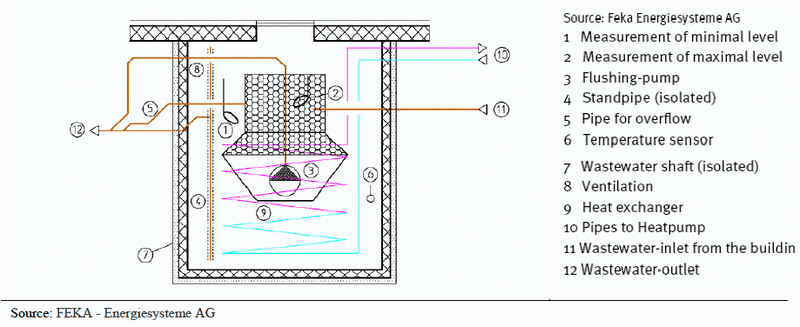Emilly_Rose
Civil/Environmental
Hi all,
As part of the construction of an apartment building, we are evaluating the possibility of recovering heat from wastewater for heating the DHW. The mixed wastewater is collected in a pit where there is a heat exchanger connected to a water-water heat pump. There is therefore a heat stock formed in the pit.
I would like to be able to evaluate the splicing options of various streams. That is, I would like to be able to estimate the changes in the amount of energy available as a function of the flow rates and temperatures of the different connected wastewater streams. Example: what is the energy gain if I connect the waste water from the showers (given volume and given temperature per day) or if I do not connect them.
Does anyone have any idea how to proceed to make a consistent approximation?
Thanks
As part of the construction of an apartment building, we are evaluating the possibility of recovering heat from wastewater for heating the DHW. The mixed wastewater is collected in a pit where there is a heat exchanger connected to a water-water heat pump. There is therefore a heat stock formed in the pit.
I would like to be able to evaluate the splicing options of various streams. That is, I would like to be able to estimate the changes in the amount of energy available as a function of the flow rates and temperatures of the different connected wastewater streams. Example: what is the energy gain if I connect the waste water from the showers (given volume and given temperature per day) or if I do not connect them.
Does anyone have any idea how to proceed to make a consistent approximation?
Thanks

